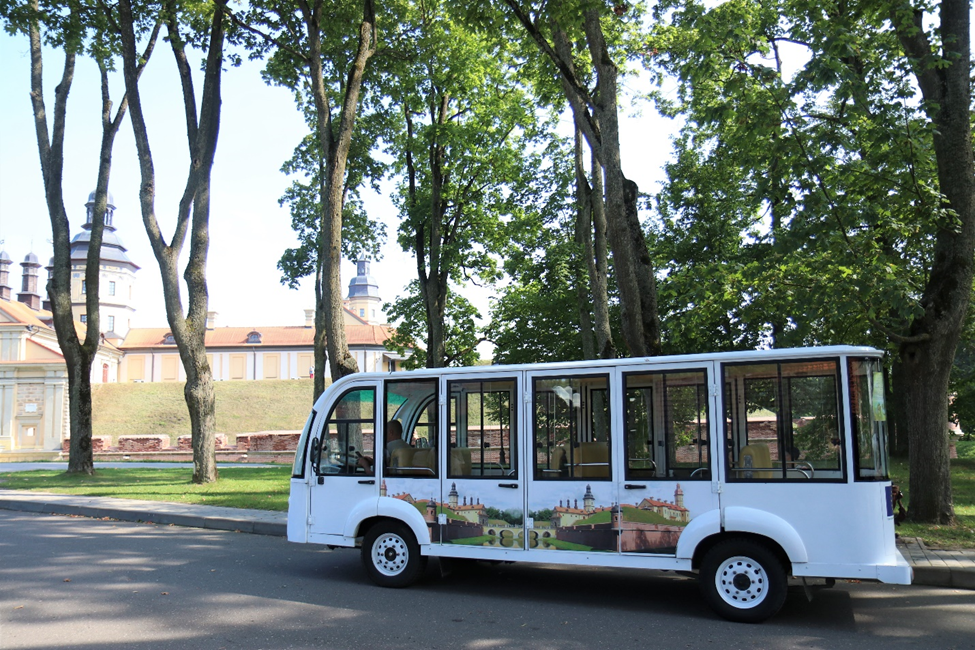The Nesvizh palace-and-park complex. Photogrpahy: UNDP in Belarus.
The use of green transport solutions in tourism is still a poorly researched area in Belarus. On the eve of World Tourism Day, celebrated annually on 27 September, we are presenting a pilot initiative by UNDP and the Ministry of Natural Resources and Environmental Protection of the Republic of Belarus designed to introduce sustainable green mobility modes on the territory of the historic palace and park complex in Nesvizh in Minsk region of Belarus.
The Nesvizh complex is, probably, one of the most iconic places on the tourist map of Belarus. Before the pandemic, about half a million tourists visited the complex every year. Built at the end of the 16th century by the Italian architect Giovanni Maria Bernardoni, the Nesvizh Castle is included in the UNESCO World Heritage List. The castle is surrounded by five natural parks with a total area of 66 hectares, where rare species of trees grow. Therefore, the territory of the entire complex has been provided the status of a specially protected natural area, where cars with internal combustion engines are not allowed.
Accessibility of tourist facilities is one of the key conditions for sustainable tourism development. Elderly people and people with disabilities make up the majority of visitors in Nesvizh. The restriction on transport and the vast area of parks make the mobility of this category of tourists around the territory rather challenging. Additionally, some tourists prefer to move around the complex on their own and not be "tied" to guided groups. These requests have become an incentive to change approaches to mobility around the complex by piloting green solutions.
Joining efforts with the Ministry of Natural Resources and Environmental Protection of the Republic of Belarus and with the financial support of the European Union, UNDP developed a Green Transport Strategy for the Nesvizh Palace and Park Complex.
The first tourist electobus in Belarus.
The strategy offers solutions for each category of tourists. Thus, the first electric tourist bus in Belarus was procured with the EU support for organized groups of up to 20 people.
Tourists preferring individual mobility means can rent bicycles and hoverboards. Families and small groups with the elderly and people with disabilities can move around the territory in multi-seater velomobiles.
The green means of transportation made it possible to make every corner of the complex accessible to people of all age groups and physical abilities, while taking into account the environmental needs of this unique historic and natural territory. Better accessibility of the complex's facilities entails an increase in the number of tourists. Green mobility options also attract tourists who prefer to combine an educational program with outdoor activities.
The increase in flow of tourists also stimulates local entrepreneurial environment. More small businesses and artisans come to the complex to sell souvenirs and craft products.
The introduction of green sustainable mobility within tourist destinations brings undeniable benefits both for tourists and for the local economy and environment.

 Locations
Locations






